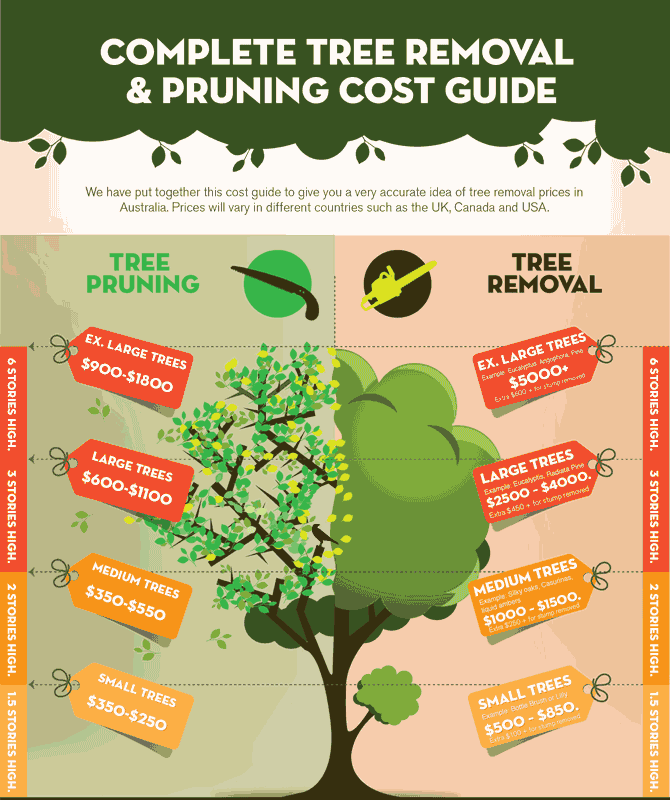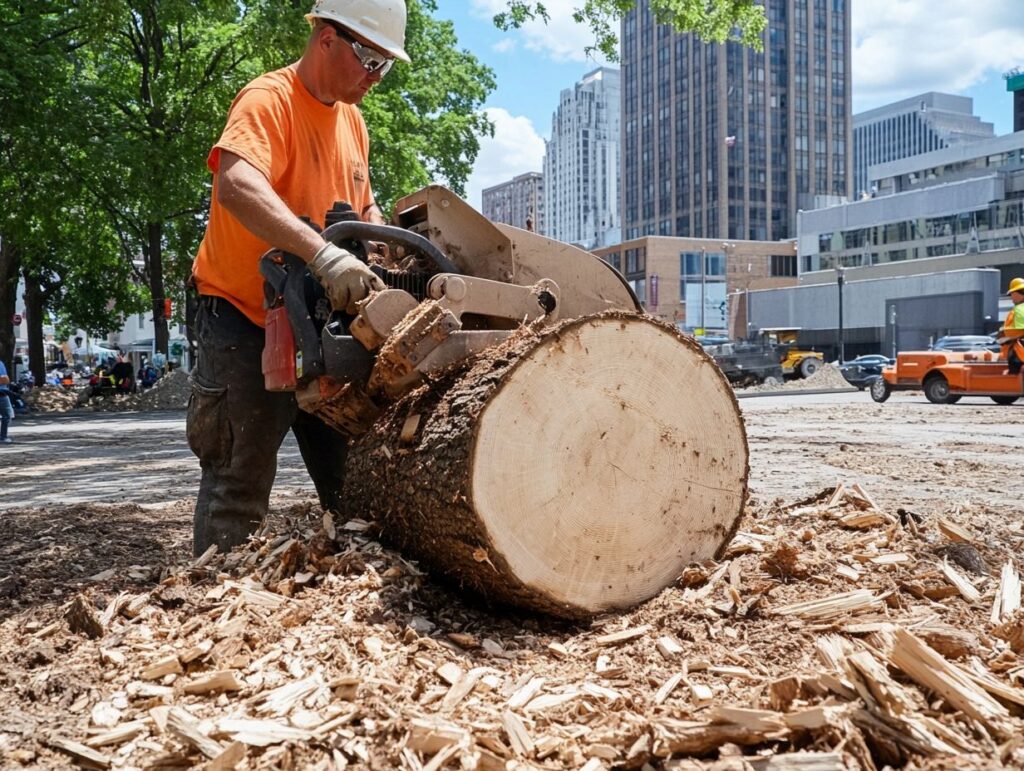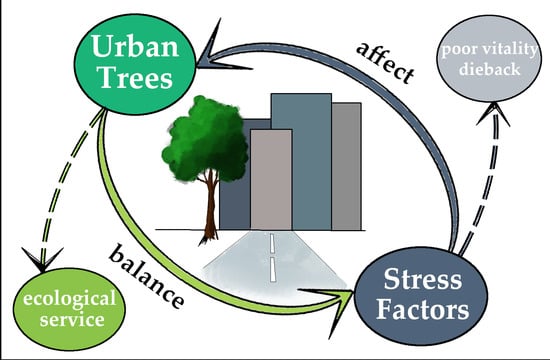What Are the Key Factors Influencing Tree Pruning Pricing?
Tree pruning pricing typically ranges from £4 to £8 per tree annually for basic maintenance, though costs can vary significantly based on several influencing factors. Understanding these variables helps municipalities and property managers budget effectively for urban tree maintenance programmes.
The baseline tree pruning pricing reflects routine maintenance for young to medium-sized trees in easily accessible locations. This estimate generally covers standard crown cleaning, deadwood removal, and minor structural corrections carried out during scheduled maintenance cycles. However, actual expenses can rise considerably when trees require specialised care, additional safety measures, or are located in hard-to-reach areas.
Species-Specific Considerations
Different tree species demand varying levels of pruning attention and expertise. Fast-growing species like willows and poplars require more frequent intervention, potentially doubling annual pruning costs compared to slower-growing varieties such as oaks or beeches. Species with brittle wood or susceptibility to disease need more intensive monitoring and corrective pruning to maintain structural integrity.
Certain ornamental species planted in urban settings require precise pruning techniques to preserve their aesthetic form. Japanese maples, for instance, demand skilled arborists familiar with species-specific growth patterns, commanding premium rates for proper maintenance. Native species adapted to local conditions often prove more economical to maintain over their lifespan.

Location and Accessibility Impact
Urban tree location dramatically influences pruning cost factors. Trees planted near power lines require certified utility arborists and specialised equipment, increasing costs by 50-150% compared to open-space specimens. Proximity to buildings, roads, or pedestrian areas necessitates additional safety measures, traffic management, and insurance coverage.
Access constraints present significant cost variables:
- Trees in confined spaces requiring smaller equipment or hand-climbing techniques
- Sites with limited vehicle access necessitating longer setup times
- Historic districts or conservation areas with strict operational guidelines
- Properties requiring extensive protection measures for surrounding landscapes
Maintenance Level Requirements
Urban tree maintenance cost scales with the intensity of care required. Newly planted trees need formative pruning to establish proper structure, whilst mature specimens require careful crown management to maintain health and safety. Neglected trees often demand corrective pruning that costs 3-5 times more than preventative maintenance.
Proactive maintenance programmes reduce long-term expenses by addressing issues before they escalate. Trees receiving regular attention
Why Is Proper Tree Pruning Essential for Urban Tree Health and Safety?
Proper tree pruning is a crucial aspect of tree care that directly extends tree lifespan. It involves removing diseased, damaged, or dead branches that could otherwise compromise the entire tree’s structural integrity. Strategic pruning strengthens trees by redirecting growth energy to healthy branches, developing stronger branch unions, and creating balanced canopies that withstand wind loads and weather stress. Well-maintained trees through regular pruning can live 20-30 years longer than neglected specimens, maximising the return on initial planting investments.
Tree health improves dramatically when pruning removes competing leaders, corrects poor branch angles, and eliminates crossing branches that create wounds. These interventions prevent decay from entering the tree through damaged bark and reduce pathogen transmission between branches. Proper cuts made at the branch collar allow trees to compartmentalise wounds effectively, activating natural defence mechanisms that seal off damaged areas. Young trees particularly benefit from formative pruning that establishes strong scaffold branches, preventing structural defects that become costly or impossible to correct in mature specimens.
Structural Stability and Risk Mitigation
Urban tree safety depends on identifying and removing hazardous branches before they fail. Pruning eliminates deadwood, reduces end-weight on overextended limbs, and removes branches with weak attachment points. Trees with co-dominant stems—two trunks of similar size competing for dominance—face significantly higher failure rates during storms. Corrective pruning addresses these structural weaknesses whilst trees remain manageable sizes.
The tree pruning benefits for risk reduction include:
- Prevention of branch failure over pedestrian areas, vehicles, and buildings
- Clearance maintenance around power lines, reducing outage risks and fire hazards
- Sight line improvements at intersections and traffic signals
- Building clearance that prevents roof damage and reduces pest entry points
- Infrastructure protection by managing branches near utilities and street furniture
Research demonstrates that properly pruned trees experience 60-75% fewer storm-related failures compared to unpruned trees. This risk reduction translates directly into avoided liability costs, emergency response expenses, and property damage claims.
The Compounding Costs of Neglect
Deferred pruning creates exponentially higher expenses through multiple pathways. Small corrective cuts made during routine maintenance are significantly less costly than large-scale removals or emergency responses triggered by neglected tree issues. Over time, these accumulated costs can strain budgets for municipal parks departments or private property owners responsible for maintaining urban greenery.
Additionally, unaddressed tree hazards may lead to accidents resulting in injuries or fatalities—exposing municipalities or property owners to legal liabilities far exceeding any savings gained from postponing necessary pruning actions.
By prioritising proactive tree care through regular inspections and timely pruning interventions, cities can mitigate potential risks while optimising long-term financial sustainability associated with their urban forestry initiatives. Such urban forestry practices are vital for ensuring the health and safety of urban trees.
How Do Urban Trees Provide Economic and Ecological Benefits?
Urban trees provide measurable financial returns through ecosystem services that lower municipal costs and boost property values. The economic benefits of trees go beyond just looking nice; they actually save money on energy use, infrastructure upkeep, and public health expenses while also making cities more enjoyable to live in.
Air Quality Improvement and Health Cost Savings
Trees act as natural air filters, removing pollutants like particulate matter, nitrogen dioxide, sulphur dioxide, and ozone from city air. One mature tree can absorb up to 48 pounds of carbon dioxide each year and produce enough oxygen for two people. According to research by the U.S. Forest Service, urban forests in major cities remove millions of tonnes of air pollutants annually, preventing respiratory diseases and saving hundreds of millions of pounds in healthcare costs. The value of the ecosystem services provided by trees in terms of improved air quality often exceeds £50 per tree each year in densely populated areas.
Temperature Regulation and Energy Conservation
By strategically planting trees, we can reduce the urban heat island effect, where cities become significantly warmer than surrounding areas. Trees provide shade and release moisture through a process called evapotranspiration, which helps cool down the environment. Studies have shown that properly positioned trees can lower air conditioning costs by 15-35% during summer months. In fact, the canopy of a mature tree provides shade equivalent to ten room-sized air conditioners running for 20 hours every day. These energy savings translate into substantial economic value, with individual trees saving adjacent properties £30-75 each year on their utility bills.
Carbon Sequestration Value
Urban trees play a crucial role in combating climate change by absorbing carbon dioxide from the atmosphere and storing it in their biomass. A healthy urban tree can sequester approximately 0.5-1 tonne of carbon over its lifetime, with larger species storing even more. Based on current carbon pricing mechanisms, this sequestration represents £15-30 per tree each year. Cities that have strong urban forestry programmes are collectively offsetting thousands of tonnes of carbon emissions, contributing to climate mitigation efforts while also generating economic value through avoided carbon costs.
Stormwater Management Infrastructure Savings
Tree canopies intercept rainfall, reducing stormwater runoff volume by 10-30% depending on the species of tree and how much canopy coverage there is. The root systems of trees also play a role in increasing soil permeability,”
What Is the Relationship Between Pruning Costs and Ecosystem Service Value?
Regular tree pruning costs between £4-£8 per tree annually, yet the ecosystem services these maintained trees provide can generate benefits worth £50-£200 per tree each year. This dramatic difference in pruning cost vs benefits reveals why systematic maintenance represents sound financial planning rather than discretionary spending.
The Mathematics of Maintenance Investment
Urban forestry economics demonstrates that every pound invested in pruning yields substantial returns through sustained ecosystem service delivery. A mature street tree requiring £7 in annual pruning attention might provide:
- £35-£45 in air quality improvements through pollutant removal
- £20-£30 in stormwater management value
- £15-£25 in energy savings from building shade
- £10-£15 in carbon sequestration benefits
The ecosystem service valuation shows pruning expenses typically represent 5-10% of the annual benefits a healthy tree generates. Skipping maintenance to save immediate costs creates a false economy—unpruned trees decline in health, reducing their service output by 30-50% within just a few years.
Preventing Benefit Erosion Through Proactive Care
Tree Pruning Pricing and the Economics of Urban Ecology intersect most clearly when examining benefit preservation. A tree that loses major limbs due to neglect doesn’t simply require emergency removal costing £300-£800; it permanently eliminates decades of future ecosystem services worth thousands of pounds.
Consider a 40-year-old oak providing £120 annually in combined benefits. Investing £280 in pruning over its next 20 years preserves £2,400 in ecosystem services. Neglecting this maintenance might save the pruning budget but risks premature tree failure, forfeiting both the remaining service value and the initial establishment investment.
The financial rationale extends beyond individual trees. Municipal forestry programmes maintaining 10,000 trees at £6 per tree annually (£60,000 total) sustain ecosystem services valued at £800,000-£1,500,000 yearly—a benefit-cost ratio exceeding 13:1 even before accounting for avoided losses.
Hidden Costs That Proper Pruning Prevents
Infrastructure damage represents a significant category of
How Can Municipalities Optimize Pruning Practices to Maximize Economic Efficiency?
Optimising pruning practices begins with strategic species selection during the planning phase of urban forestry management. Municipalities that choose tree varieties with naturally compact root systems and predictable growth patterns reduce future maintenance demands and infrastructure conflicts. Species such as Japanese Zelkova, Ginkgo biloba, and certain cultivars of oak demonstrate less aggressive root expansion, minimising pavement damage and utility line interference whilst requiring less frequent structural pruning interventions.
The economic advantage extends beyond reduced pruning frequency. Trees selected for their compatibility with urban constraints typically experience fewer health complications, lower mortality rates, and extended service lives. A municipality investing in appropriate species selection at the outset may reduce total lifecycle maintenance costs by 30-40% compared to managing problematic species that demand constant corrective pruning and eventual premature removal.
Strategic Urban Design Integration
Cost-effective tree care requires rethinking how urban spaces accommodate tree growth from the design stage. Adequate soil volume represents the foundation of efficient urban forestry management—trees provided with 20-30 cubic metres of quality soil develop robust root systems within designated zones rather than seeking resources beneath pavements and foundations. Structural soil systems, suspended pavements, and silva cells enable root expansion without compromising infrastructure integrity.
Proper spacing between trees and built structures prevents costly conflicts before they emerge. Maintaining minimum distances of 3-4 metres from buildings and 2 metres from underground utilities reduces the need for aggressive root pruning and crown reduction work. These spatial allowances permit natural growth habits, decreasing the frequency of corrective pruning cycles from annual interventions to 3-5 year maintenance schedules.
Implementing Risk-Based Pruning Schedules
Municipalities achieve maximum economic efficiency by prioritising pruning resources according to risk assessment protocols rather than uniform schedules. High-traffic areas, locations near critical infrastructure, and trees with structural defects receive more frequent attention, whilst low-risk specimens in parks or green spaces follow extended maintenance intervals. This tiered approach allocates limited budgets where they generate the greatest safety and economic returns.
Data-driven inventory systems enable precise resource allocation by tracking individual tree conditions, maintenance histories, and risk profiles. Digital platforms help forestry managers identify which trees require immediate pruning intervention versus those that can adhere to longer schedules based on their assessed risk levels.
To further enhance these practices, municipalities can refer to comprehensive documents such as Fort Collins’ Urban Forest Strategic Plan, which offers valuable insights into effective urban forest management strategies.
How Does Integrating Cost Assessments with Ecological Valuation Guide Urban Forestry Budgets?
Urban forestry budgeting becomes exponentially more effective when municipalities merge granular cost data with quantified ecosystem service values. This integration transforms tree management from a discretionary expense into a strategic investment with measurable returns, enabling decision-makers to justify expenditures through documented economic benefits that often exceed maintenance costs by ratios of 2:1 to 5:1.
Building the Foundation for Data-Driven Decisions
Comprehensive cost-benefit analysis trees require municipalities to track every dollar spent on pruning, planting, removal, and emergency interventions whilst simultaneously measuring the monetary value of services these trees provide. A city spending £25 per tree annually on comprehensive care might document £150 in combined benefits from air quality improvement, stormwater retention, and energy savings. This quantification shifts budget conversations from “can we afford tree maintenance?” to “can we afford not to maintain our tree assets?”
The most successful programmes establish baseline metrics:
- Annual maintenance costs per tree broken down by species and location
- Documented ecosystem service values using standardised i-Tree or similar assessment tools
- Infrastructure cost avoidance from proper root management and pruning
- Property value impacts in tree-lined versus treeless neighbourhoods
- Emergency response costs for poorly maintained versus well-maintained trees
Transforming Resource Allocation Through Evidence
Resource allocation urban ecology decisions gain clarity when budget planners can compare the £8 annual pruning cost against the potential £2,000 liability from a fallen branch or the £500 annual cooling savings a mature tree provides to adjacent buildings. Cities like Melbourne and Portland have demonstrated that allocating 15-20% more to preventive pruning reduces emergency tree-related expenditures by 40-60% over five-year periods.
Strategic allocation prioritises high-value trees in critical locations. A street tree providing £200 in annual ecosystem services justifies more frequent maintenance than a park tree generating £50 in benefits. This targeted approach maximises return on investment whilst respecting budget constraints. Data reveals that trees near commercial districts, schools, and healthcare facilities often deliver disproportionate benefits through pollution reduction and temperature moderation where vulnerable populations concentrate.
Incorporating evidence-based approaches such as those outlined in studies like this one from ESA Journals, which discusses the importance of integrating ecological valuation into urban planning, can further enhance the effectiveness of urban forestry budgets by ensuring that both economic and environmental considerations are taken into account.

Conclusion
Does strategic investment in tree pruning deliver measurable returns for urban communities? Yes—proper investment in pruning generates substantial long-term ecological and economic gains that far exceed maintenance costs. Cities spending $5–10 annually per tree on pruning protect ecosystem services worth hundreds of dollars per tree each year, including energy savings, stormwater management, and property value enhancement.
The value proposition for proactive urban tree management rests on preventing costly failures whilst maximising benefits. A well-maintained tree canopy reduces infrastructure damage, lowers liability risks, and sustains air quality improvements that would cost millions to replicate through mechanical systems. Tree maintenance economics summary data consistently shows benefit-cost ratios of 3:1 or higher for comprehensive care programmes.
Tree Pruning Pricing and the Economics of Urban Ecology demonstrates that maintenance expenses represent strategic investments rather than discretionary spending. Urban ecology implications extend beyond individual trees to entire community systems—from reduced heat island effects to improved mental health outcomes. When municipalities view pruning through this economic lens, budget allocations shift from reactive crisis management to preventative care.
The path forwards requires continued integration of economic analysis into urban forestry strategies. Decision-makers need:
- Robust data systems tracking both maintenance costs and quantified ecosystem service values
- Species-specific economic models informing planting and care priorities
- Long-term budget frameworks that account for cumulative benefits over tree lifespans
- Cross-departmental collaboration linking forestry, infrastructure, and public health budgets
Cities that embrace comprehensive economic valuation position themselves to optimise resource allocation whilst building resilient urban forests. The evidence is clear: every pound invested in strategic tree pruning returns multiple pounds in ecological services, infrastructure protection, and community value.
Ready to transform your urban forestry programme? Start by conducting a full economic assessment of your tree inventory—the numbers will make the case for proper pruning investment.
Learn more: Tree Trimming as a Cultural Practice in Managing Human–Nature Boundaries
FAQs
Tree pruning costs vary based on tree species, size, location, accessibility, maintenance requirements, and safety considerations. Specialized techniques or urban constraints can increase the price.
Routine pruning typically costs between £4–£8 per tree annually for basic maintenance, covering crown cleaning, deadwood removal, and minor structural corrections.
Fast-growing, brittle, or ornamental species require more frequent and skilled pruning. Trees like willows, poplars, and Japanese maples often command higher rates due to their specialized care needs.
Trees near power lines, buildings, roads, or confined spaces require additional safety measures, certified arborists, and specialized equipment, which can increase costs by 50–150%.
Pruning removes dead, diseased, or damaged branches, strengthens structural integrity, promotes balanced canopy growth, and reduces susceptibility to pests and pathogens.
Pruning mitigates hazards by removing weak branches, deadwood, and overextended limbs, preventing property damage, injury, or infrastructure failure during storms.
While pruning costs £4–£8 per tree annually, the ecosystem services from maintained trees—air quality, stormwater management, energy savings, and carbon sequestration—can generate £50–£200 per tree each year.
Regular pruning prevents emergency removal costs, preserves property value, sustains energy savings, and maintains public safety, providing a strong return on investment over decades.
Municipalities can optimize costs by selecting low-maintenance species, integrating trees into strategic urban design, implementing risk-based pruning schedules, and using data-driven inventory systems.
Investing in preventive pruning maintains tree health, maximizes ecosystem services, reduces liability risks, and avoids expensive corrective work, typically yielding multiple pounds in benefits for every pound spent.



